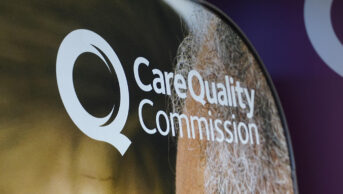
Alamy
The arrival of an inspector from the General Pharmaceutical Council (GPhC) can already be a stressful experience for everyone working in a community pharmacy, but the regulator is preparing to announce a move to an even tougher regime.
It has already consulted on some of the details, including the introduction of unannounced inspections, the online publication of inspection reports and each pharmacy being given an overall ‘Standards met’ or ‘Standards not all met’ rating. We also learnt in November 2018 that the regulator now has the power to conduct covert investigations of pharmacies, although it says it is yet to use this power to ‘stake out’ a pharmacy.
The GPhC’s original proposals, published in May 2018, were met with some concern from pharmacy representative bodies, with the Pharmaceutical Services Negotiating Committee calling unannounced inspections “unnecessary and undesirable”. The Royal Pharmaceutical Society says it supports the publication of inspection reports, but warned that there “should be a greater focus on workplace pressures and the impact that these may have on the staff working in the pharmacy”.
The inspection regime outlined by the GPhC does seem substantially tougher than the one the Care Quality Commission (CQC) currently operates in NHS hospitals, GP surgeries and care homes. For example, GP surgeries are given two weeks’ notice before an inspection and out-of-hours GP services have six to eight weeks’ notice. The CQC also gives a more nuanced set of four overall ratings (outstanding, good, requires improvement and inadequate) rather than the binary equivalent of a pass or fail proposed by the GPhC.
However, the GPhC says it has strong support among the public for its proposals and after several negative press reports about standards in community pharmacy, it is determined to restore public trust. The regulator is due to meet in early December 2018 to look at the results of the consultation and present a revised draft of its proposals.
Of course, it is right that pharmacies are held to the highest possible standards and that quality is so embedded in practice that these standards are adhered to every day. Well-run pharmacies should have nothing to fear and inspections should be a chance for a holistic assessment of how a pharmacy is working and how it contributes to its local community.
But the prime objective must be improving patient safety, rather than just following procedures and measuring what is able to be measured. Indeed, there is patchy evidence that third-party inspections improve care at all and a report by Alliance Manchester Business School and The King’s Fund, published in September 2018, found the CQC’s regime only had “small and mixed effects” on performance indicators.
Inspections are intrusive and time-consuming exercises and the GPhC must prove that any changes to its regime are worth it. The whole process must contain enough incentives to drive continuous improvement in pharmacies to make it worth the additional costs. A rating system that allows for celebration of excellent care — an aspirational ‘outstanding’ award for instance — and a package of support to help pharmacies achieve the highest possible standard of care would both help. There must be carrots included, as well as sticks.


